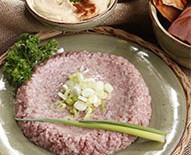Language Tells a Story: the Evolution of the Arabic Language
By: Emily Devereaux/ Arab America Contributing Writer
Historically, Arabic is a Proto-Semitic language, which is a subgroup of Afro-Asiatic languages. Other Proto-Semitic languages are Hebrew and Amharic. However, many linguists have studied the Proto-Semitic languages and have surmised that between Hebrew, Amharic, and Arabic, that Arabic has been the only one to maintain its Proto-Semitic features.
Many people tend to believe that language is static and unchanging. However, this is not always the case. Language seems to be constantly evolving, understanding how colloquial languages shift based on region, or even due to slang. While Arabic has remained quite static, there have also been some noticeable changes.
Modern Standard Arabic versus Classical Arabic
One major noticeable change has been the shift between Classical Arabic into Modern Standard Arabic. Modern Standard Arabic, in a gist, is a little more simplified in comparison to Classical Arabic. However, many people do not speak Modern Standard Arabic and typically deviate from their own regional dialect. This is known as diglossia. Diglossia basically means that Arabic is not just one language, but it is two languages. Many linguists hold that there is Modern Standard and there are regional dialects, which can be understood as two separate languages sometimes.
But what are the differences between Modern Standard Arabic and Classical Arabic? Classical Arabic is typically more grammatical, which means that it is typically a little more formal. This contributes to why Classical Arabic is typically utilized in literature and musical contexts, similar to how Shakespeare used more formal English.
It is important to remember that context matters in language. In certain situations, it may be more appropriate to speak Classical Arabic rather than Modern Standard, and vice versa. Many Muslim Arabs may deviate from speaking Modern Standard Arabic in religious contexts. For this reason, many people call Classical Arabic Quranic Arabic.
Modern Standard Arabic is typically used more in media because Modern Standard tends to be understood better in conversation. Therefore, many broadcasts and news outlets in the Arab world use Modern Standard Arabic so people far and wide can understand the content spoken.
Dialectical Differences
The variability in dialect between regions is typically found within how vowels are used in the area, but some dialects also have major differences in vocabulary and grammar. Variability on a regional basis is likely a result of cultural differences, in which a certain generation evolved Arabic in the region by a bit, and it trickled down into future generations.
By now, there are approximately thirty dialects of Arabic. Native speakers rarely speak Modern Standard Arabic but instead deviate toward their own regional dialect. However, the primary differences between regional dialects and Modern Standard have to do with the pronunciation of certain letters or words, as well as the grammatical structure.
Dialects of the same region typically have minor differences. Whereas the dialect spoken in Saudi Arabia may differ widely from the dialect spoken in Algeria. This article explains the unique properties and origins of each regional dialect.
Conclusion
While Arabic has typically stayed very static, the history of the Arabic language shows trends that embrace regional cultures and having different etiquettes based on the context of the conversation. Arabic can be situational. Many people change the way that they speak based on who they are talking to, the tone of the conversation, and whether it is in a religious context. The same goes for which dialect they speak. Muslim Arabs may speak Classical Arabic during religious gatherings. News channels may write segments in Modern Standard. Overall, the history of the Arabic language shows a culture that acknowledges how important speaking and communication are.


